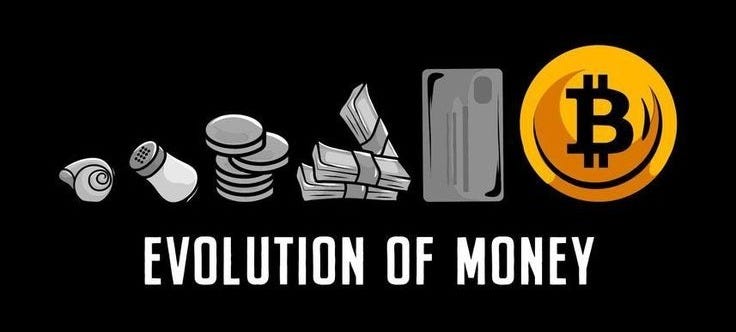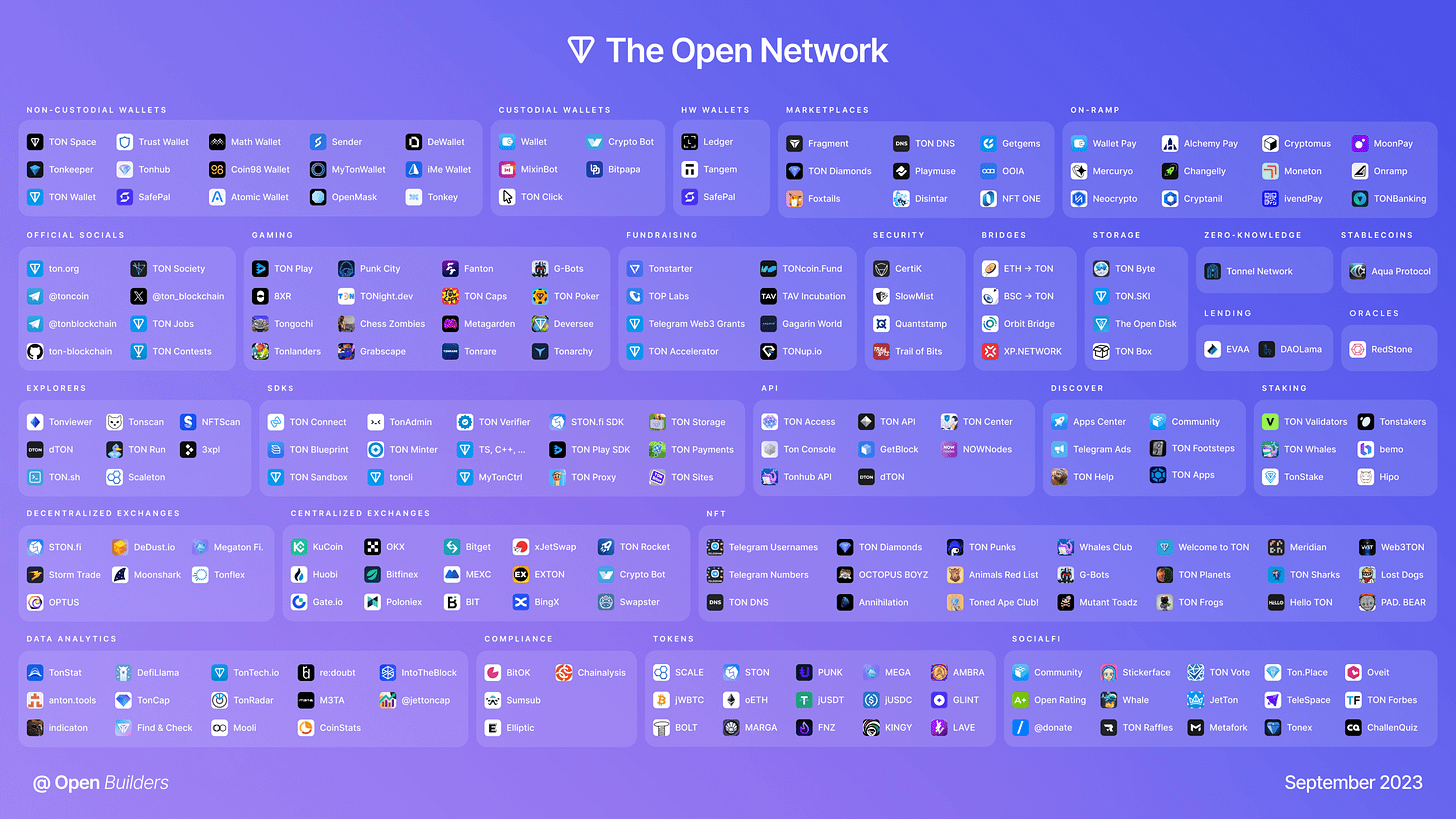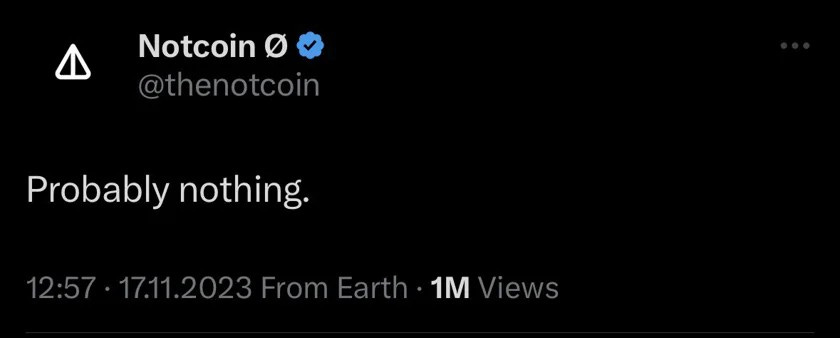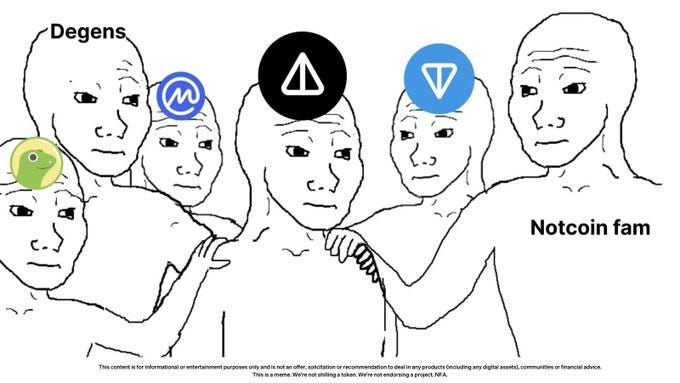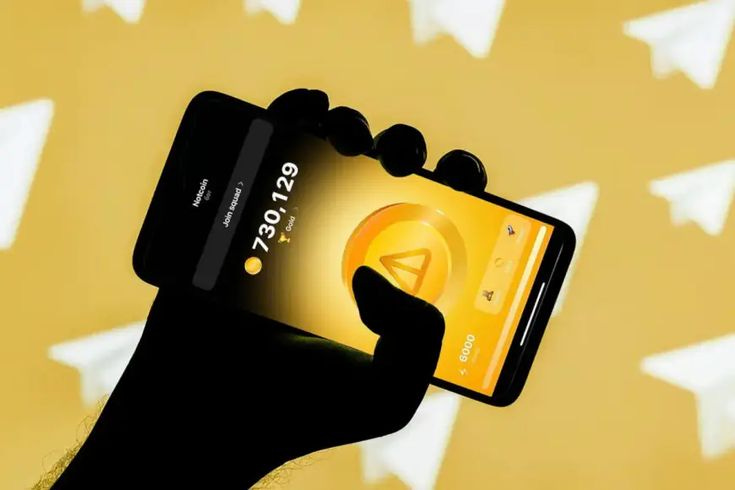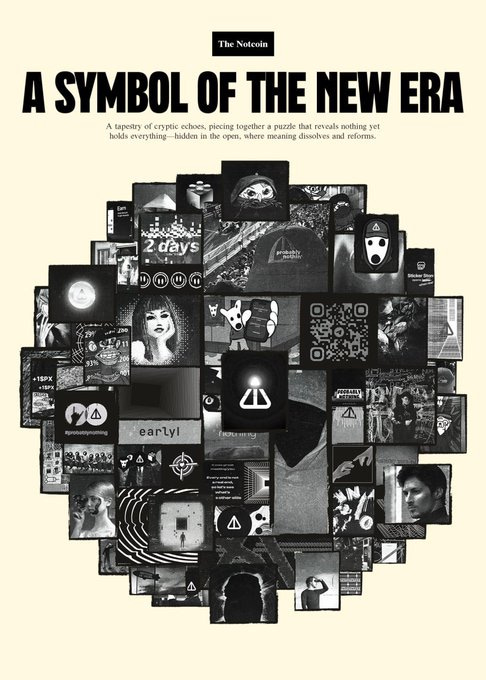'NOT'hing is Perfect.
How Notcoin ''Doing Nothing'' Sparked a Psychological and Economic Revolution.
When future digital anthropologists study the evolution of value in the crypto era, Notcoin will likely stand as a pivotal moment.
Not because of what it built, but because of what it deliberately chose not to.
How can a project defined by "nothingness" become something profound?
This essay explores the psychological, social, and economic implications of Notcoin’s experiment in collective value creation, revealing how the absence of substance can, paradoxically, generate immense engagement and value.
But before we dive into my insights, let’s rewind to when nothing actually happened.
Video credit (Inception by Yaroslav Kinchin)
Introduction
In the vast timeline of human innovation, the idea of "nothing" as a basis for value was as unimaginable as it was unimportant. For centuries, economies revolved around tangible assets: gold, land, goods.
Value was inherently tied to physical objects or labor. But with the dawn of the digital revolution, a radical shift occurred: value became decoupled from substance.
Bitcoin ''The Birth of Purpose in Nothing''
In 2008, came Bitcoin, as the first spark in this transformation. Built on blockchain technology, Bitcoin was designed to be a decentralized currency, a form of money free from central authority and manipulation.
Its purpose was clear:
To challenge traditional financial systems by offering an alternative based on cryptographic proof rather than trust.
Bitcoin represented "something" in a world where nothing tangible supported its value. Its scarcity, security, and decentralization gave it purpose. Positioning it as the "digital gold."
Despite skepticism, Bitcoin thrived because it solved real-world problems and the foundation for a new era of digital economies, but it was just the beginning.
Ethereum ''The Utility in the Void''
Then came Ethereum, launched in 2015, while Bitcoin focused on value as a currency expanded the concept of blockchain beyond money. Ethereum introduced ‘‘smart contracts’’, enabling programmable applications that could run autonomously on its blockchain.
This added utility to the void. It showed that blockchain could do more than store and transfer value, it could enable decentralized finance (DeFi), games, art (NFTs), and entire ecosystems.
With Ethereum, blockchain evolved from a ledger of value into a programmable infrastructure, paving the way for an entire decentralized economy. However, Ethereum’s success brought scalability challenges, leading to the rise of next generation blockchains.
Ton ''Infrastructure for the Future''
Then The Telegram Open Network (TON) emerged, it introduced a different perspective, focusing on scalability, speed, and integration with existing platforms.
The development of TON has been a winding journey. It was initially created by Telegram in 2018 and successfully launched an ICO in 2019, setting a record in the process. The project envisioned a world where blockchain infrastructure could support global-scale applications seamlessly and it brought the technical prowess to match the growing ambitions of Web3.
Its focus was not only on empowering decentralized applications. Unlike Bitcoin and Ethereum, which required independent adoption, TON integrated seamlessly with existing everyday communication social platform, notably Telegram, with its billions of users.
By marrying blockchain with social ecosystems, TON is growing so large by making their technology accessible and meaningful to the masses.
The Turning Point: From Purpose to Paradox
Each of these milestones
Bitcoin’s decentralized currency.
Ethereum’s programmable blockchain.
TON’s scalable infrastructure.
Pushed the boundaries of how blockchain could redefine value, utility, and interaction. But these projects were still tethered to the idea of "something." They sought to solve problems, create utility, or disrupt existing systems.
Then came a concept so audacious, so counterintuitive, that it flipped the narrative entirely: A blockchain project that embraced ‘‘nothingness’’ as its purpose.
Notcoin, the ultimate paradox, arose not to solve problems but to function as major currencies that are problem solvers. By deliberately rejecting utility, purpose, or intrinsic value, Notcoin became a mirror reflecting the absurdity, ingenuity, and social dynamics of digital economies.
It posed a radical question: If value is a social construct, can nothingness itself be the most profound construct of all?
Notcoin is an exploration of human behavior in finance, questioning our need for purpose and the allure of speculation. Its paradox lies in its success of how it turned an absence of value into a phenomenon that attracted millions.
On gaining insight on when nothing had purpose to when nothingness became a purpose, here's what I found or rather the answers to some questions about Notcoin's radical concept of "doing nothing, earning something.".
Concept: What really was the inspiration for ''nothingness''
Psychologically: How can something with zero intrinsic value create such obsession and demand? Are we valuing the concept of nothing itself?
Socially: How did we create such complex social hierarchies around nothing?
Economically: Are we breaking economics or discovering how it always worked
Lastly, True nothingness: Why Notcoin the Game That Wasn’t a Game Worked?
The inspiration for ''nothingness''
There was probably something done before NOThing, it’s called the concept/idea adoption. The idea of Notcoin was not born from complex algorithms or financial theories, but rather from simple, dopamine-driven mobile games specifically, the widely popular genre of clicker games.
One of the primary inspirations behind Notcoin was the legendary game Cookie Clicker, a browser-based game where users simply click to produce cookies.
With no real complexity, Cookie Clicker quickly amassed millions of players worldwide, showcasing a fundamental human trait—our love for simple, repetitive tasks that offer an illusion of progress.
How true? according to Sasha Plotvinov, co-creator of Notcoin:
"We drew inspiration from Cookie Clicker, which attracted millions of players even before cryptocurrency became mainstream."
Clicker games are neither innovative nor uncommon, not even in the cryptocurrency industry. known for their straightforward mechanics and satisfying progression systems, they rely on the instance of instant gratification, rewards, and habit formation and fun.
Key inspirations drawn from clicker games:
Simplicity: Users should not have to learn complex systems—just tap and enjoy.
Endless progression: Clicking provides an illusion of growth, even if it leads nowhere.
Low effort, high reward: Players engage without needing technical knowledge or investment.
By adopting these principles and embedding them into the crypto ecosystem, Notcoin introduced an element of nostalgic familiarity with a modern Web3 twist to onboard millions of people.
The Psychology of Nothingness: Creating Engagement Without Expectations
On a deeper level, Notcoin’s was rooted in human psychology—our innate attraction to low-effort, high-reward activities.
Notcoin’s design eliminated the cognitive burden of traditional financial investments, which often require extensive research, risk assessment, and decision-making. Instead, it introduced a frictionless way to engage with crypto, based on three psychological drivers:
1. The Paradox of Effortless Achievement
Humans are wired to pursue rewards with minimal effort. The "click-to-earn" model provides an illusion of progress without real input, making participation effortless and enjoyable.
Example: Social media platforms reward users with likes and comments for minimal engagement, creating a feedback loop that encourages continued participation. Notcoin applied this same principle to blockchain subconsciously.
2. Gamification of Nothingness
Notcoin introduced game mechanics such as leaderboards, community events, and friendly competition to turn meaningless tapping into an achievement-driven pursuit.
Gamification strategies used by Notcoin include:
Daily streak rewards: Encouraging users to return and click regularly.
Community-driven challenges: Encouraging group participation.
Leaderboards: Adding a competitive element to an otherwise pointless action.
3. The Power of "Low Commitment" Participation
Unlike traditional crypto investments that require financial stakes, Notcoin simply asked users to tap their screens. This "no risk, high potential reward" model lowered the psychological barrier to entry, making it appealing to a broad audience.
Through eliminating financial anxiety, Notcoin allowed users to engage without fear of loss, reinforcing the idea that participation itself held value.
Memes, Absurdity, and the Power of Internet Culture
Notcoin is not a meme, yet it thrives in the internet meme culture, where absurdity, humor, and relatability fuel engagement.
In the age of Dogecoin and Shiba Inu, where community-driven hype often surpasses real-world utility, Notcoin seems to have taken from the notion that "the less serious you are, the more viral you become."
Notcoin’s branding leaned heavily into self-deprecating humor and the absurdity of "earning by doing nothing."
For instance,
Notcoin's "use cases" include buying nothing, storing value in thin air, and powering the "Internet of No Things." Its "roadmap" outlines a series of absurd milestones, like "Phase 1: Do Nothing" and "Phase 2: Keep Doing Nothing." Its whitepaper is plain blank.
This resonated deeply with younger, internet-savvy audiences who had already embraced:
Meme/Cult Coins: Tokens like SPX, Dogecoin and PepeCoin that thrive on humor rather than functionality. An example is $SPX, the cult coin championed by @muststopmurad, reveals this kind of intriguing phenomenon, ‘‘where community-driven belief fuels growth’’.
Murad has also curated a list of similar "cult coins," each thriving and expanding due to the tight-knit, almost religious-like communities built around them.
These communities foster unwavering loyalty, shared ideologies, and a collective mission, proving that in the crypto world, belief can be just as powerful as utility.
Internet irony: A culture where the more meaningless something appears, the more valuable it can become.
"Probably Nothing" movement: A crypto meme suggesting that things with no apparent value might actually hold significant potential.
Why this humor worked for Notcoin:
Authenticity: People trust humor more than overhyped marketing campaigns.
Shareability: Absurd and funny content spreads faster and wider.
Low barrier to entry: Users can join the movement without needing deep technical understanding.
Positioning itself as a meme-driven, ironic commentary on speculative economics, Notcoin tapped into a cultural zeitgeist where digital-native communities were eager to participate in financial satire while still hoping for real profits.
The meme value mechanics:
Memes function as both product and marketing
The joke of nothingness becomes a valuable commodity itself
Self-referential humor creates stronger community bonds than traditional value propositions
Viral marketing emerges naturally from the absurdity of the concept
Economic implications: How a project that offers no intrinsic value yet captures the attention and participation of millions?
Notcoin leverages three economic forces that have long influenced financial markets, ‘‘speculation, perception, and collective belief’’. Traditional investment models rely on fundamental value propositions such as assets, revenue, and growth potential. H
However, Notcoin challenges these norms by building a community around an asset with:
No intrinsic value.
No immediate utility.
A collective belief that "nothing" might become "something."
This mirrors historical speculative bubbles such as the Tulip Mania of the 17th century and the Dot-Com Bubble of the early 2000s, where perceived value outweighed tangible utility. In Notcoin’s case, the willingness of millions to participate in "click mining" highlights how digital speculation has evolved into a cultural phenomenon, blurring the lines between entertainment and financial opportunity.
In the attention economy, Notcoin transforms user engagement into a form of currency, rewarding time spent rather than financial investment, leveraging social validation and viral participation. Its tokenomics challenge scarcity-driven models, proving that abundance or not, when gamified and fueled by hype, can sustain demand and create a thriving ecosystem.
Furthermore, Notcoin taps into behavioral economic principles, such as FOMO (Fear of Missing Out), loss aversion, and the allure of gamified progress, keeping users engaged despite the absence of intrinsic value.
The success of Notcoin suggests that in the digital age, perceived value can outweigh traditional fundamentals, giving rise to new economic models where engagement and community speculation become key drivers of value creation.
Which is why everyone now seems to want a piece.
Notcoin: The Game That Wasn’t a Game Worked!!
To be straight: Notcoin is not a game. At least, not in the traditional sense. There’s no story, no skill curve, no elaborate mechanics. It is a profit-sharing mechanism wrapped in a clicker disguise, and yet it became one of the most successful viral hits of recent years.
How?
The “Game” That Played You
Notcoin’s core appeal wasn’t about fun it was about the potential for financial gain. Users joined through Telegram, activated the @notcoin_bot, and began clicking their screens to mine virtual tokens that initially held no real-world value then but came with the promise of future rewards.
This simple yet addictive mechanism attracted millions because it leveraged speculation over enjoyment. People participated not because they loved clicking, but because they believed their effort could turn into profits. It was less of a game and more of an economic experiment.
The Economics of Engagement
Notcoin’s success stemmed from its "time-for-value" model, where user engagement was traded for potential earnings. Every tap contributed to mining tokens, later converted into cryptocurrency on The Open Network (TON). Unlike most projects where profits remain with developers, Notcoin's model incentivized participation by distributing real crypto rewards through airdrops.
Key stats:
40+ million users participated in Notcoin.
80 billion NOT tokens were distributed to over 11.5 million holders.
Despite developers profiting handsomely, early users were rewarded, creating a sense of fairness and trust.
The strategic airdrop model turned players into advocates, helping Notcoin grow exponentially and sustain viral momentum.
Leveraging Telegram for Frictionless Adoption
One of Notcoin’s most innovative aspects was its integration with Telegram. Unlike traditional games that require downloads and registrations, Notcoin was instantly accessible within an existing platform used by millions. This frictionless approach lowered the barrier to entry, making it easy for anyone to join with just a few taps.
How it worked:
Players interacted with the @notcoin_bot, which managed gameplay and account tracking.
Mined tokens were linked directly to the TON blockchain, ensuring transparency.
The use of Telegram’s mini-app API enabled smooth and seamless interaction without the need for separate apps.
By tapping into Telegram’s massive user base, Notcoin gained traction with minimal effort, leveraging the app’s built-in social and viral mechanics.
Why It Went Viral
Notcoin’s virality wasn’t just about its accessibility or potential earnings— again it felt like it tapped into deep psychological triggers like FOMO (Fear of Missing Out), social validation, and effortless participation.
Reasons behind its explosive growth:
Simplicity: Anyone with a smartphone could start mining, appealing to crypto newcomers and casual users alike.
Speculation: The belief that early participation would lead to real rewards created a gold-rush mentality.
Fairness: The wide distribution of tokens through airdrops ensured inclusivity and prevented early monopolization.
Community-driven: Telegram’s chat-based interface encouraged users to share tips, invite friends, and celebrate milestones, amplifying the viral loop.
The Future of Entertainment: Time for Value
Notcoin wasn’t just a game but a blueprint for a new era of entertainment. It represents a shift from passive content consumption to active participation, where users trade their time and attention for tangible rewards. This model could pave the way for similar future platforms where:
Watching Netflix or YouTube could earn users’ crypto micropayments.
Commenting on social media could be incentivized with token rewards.
Participation in digital communities could translate into economic value.
Platforms like Twitch and TikTok have already incorporated some aspects of this engagement economy, but Notcoin took it further by directly monetizing attention.
Notcoin ecosystem is growing with this secret formular of the Nothing Paradox.
Conclusion: Notcoin is a Movement, Not Just a Game
The evolution from Bitcoin to Ethereum to TON laid the groundwork for Notcoin. These projects demonstrated the potential of decentralization, utility, and scalability, respectively.
Notcoin however, took the lessons of these predecessors and turned them into a social and economic experiment that challenges how we perceive value, work, and community in the digital age.
It blurred the lines between gaming and investing, demonstrating that in the digital age, "doing nothing" can indeed turn into something. It challenged the conventional notions of what makes a game successful and proved that attention and speculation can be as valuable as skill and content.
As the concept of the "attention economy" continues to evolve, Notcoin’s success may very well be a sign of things to come, where the line between entertainment, participation, and financial opportunity becomes increasingly blurred.
This proves that NOThing indeed can be perfect too.
Anyways remember to Do Nothing. Keep Doing Nothing. Earn Something.
Disclaimer: This essay is based on research and personal analysis. All credits for media and inspiration are stated accordingly.


